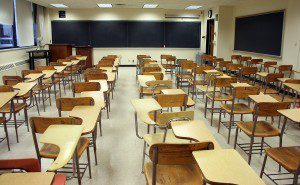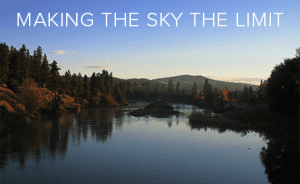Yes, smaller class sizes, high-quality teachers and adequate funding are vital in our schools.
Yet I believe we often fail to acknowledge the power that student leaders have to improve and enhance the daily experiences of all kids in Washington’s public schools. Student leadership can make or break the climate of our schools. Youth attitudes and actions influence whether their peers choose to wake up to go to school the next morning and the level of safety students feel as they walk around campus.
Beyond the classroom walls and outside of Olympia, students can play a crucial role in the success of our schools. For more than 50 years, the Association of Washington School Principals (AWSP) has been supporting and promoting student leadership through workshops, camps and conferences that serve more than 10,000 students, advisers and coaches each year.
It’s hard to articulate how powerful it is to be surrounded by 250+ high school student leaders from Forks to Central Valley, out in the wilderness of Randle, Washington, in a world free of cell phones and Facebook, tackling topics from parliamentary procedure to servant leadership. My camp experience (three years as a high school delegate and seven years as a counselor for middle level and high school camps) has been the greatest influence in my commitment to public education and service-learning.
When we look beyond today, we must remind ourselves that these students are the ones who will be the advocates, activists, parents, business leaders, teachers and legislators leading movements as a result of today’s unfinished business. In fact, we all know many students who are already initiating positive change in their schools and communities. Therefore, it is essential that we connect our youth with every opportunity possible to be surrounded by new people, new ideas and new thoughts; to ask tough questions and be uncomfortable; to take risks and to take on a leadership role whenever possible.
Please talk to your children, youth whom you know and students in your schools. Let them know of these opportunities, and encourage them to get involved. Please click on the links for more info, or get in touch with me via email or by posting a comment. This will be my eighth year with Mt. Rainier, one of the five AWSP high school leadership camps, and I look forward to working with new students from your communities and schools.
*Like most other exciting opportunities, this one is not cheap. Prices per delegate range from $275-285, depending on whether or not the school is an official member of the Washington Association of Student Councils. Some schools are able to afford to send their students to camp while others do not have the resources. Don’t miss out on the scholarship opportunities available to help students pay for camp. The scholarship deadline is March 17th.
High School Leadership Camp (Cispus and Chewelah Peak)
Middle Level Leadership Camp (Cispus and Chewelah Peak)
La Cima Bilingual Leadership Camp (Chewelah Peak)
Deaf Teen Leadership Camp (Cispus)
CheerLeadership Camp (Central Washington University)
 I have always loved September. I love the warmth of the end of summer, I love new backpacks and pencils and notebooks… I love the promise, and the hope and the possibility. As Jane gets new books for new classes I get excited and say, “Oh boy! YOU get to read THIS!” and she rolls her eyes.
I have always loved September. I love the warmth of the end of summer, I love new backpacks and pencils and notebooks… I love the promise, and the hope and the possibility. As Jane gets new books for new classes I get excited and say, “Oh boy! YOU get to read THIS!” and she rolls her eyes. Rogers High School
Rogers High School The Rural Alliance for College Success was recently awarded a
The Rural Alliance for College Success was recently awarded a